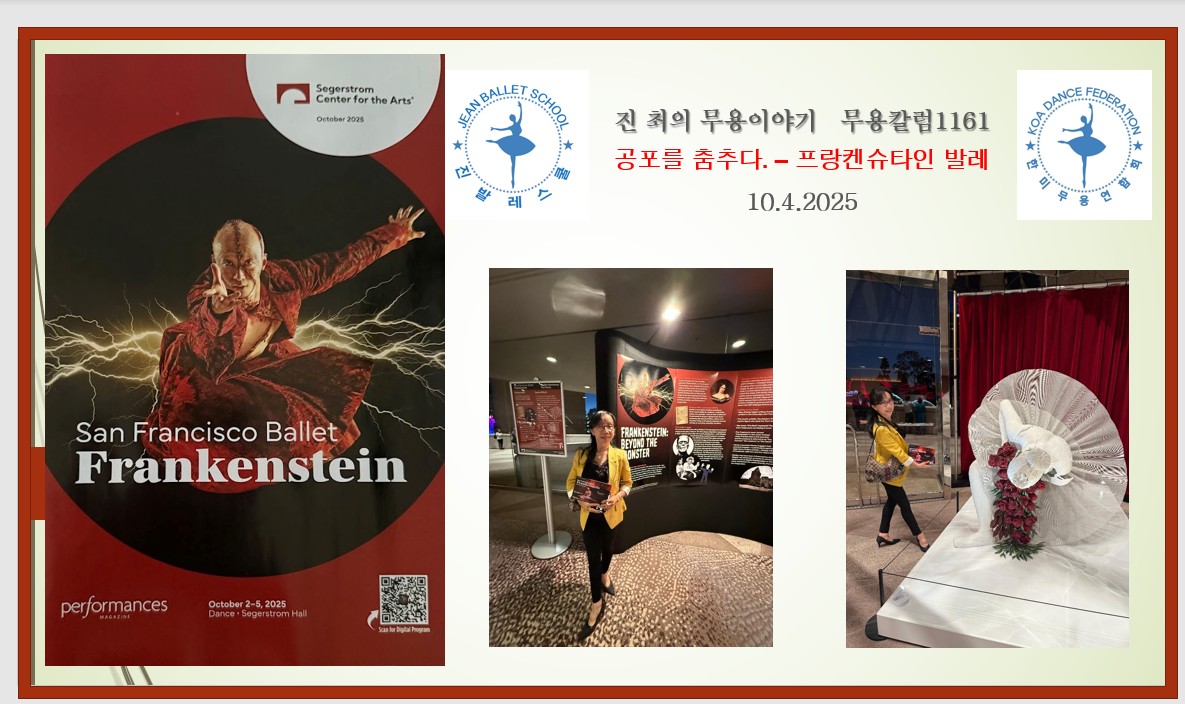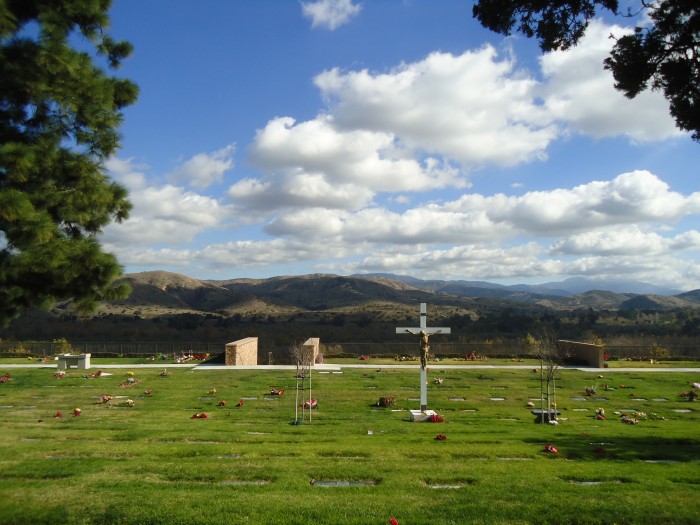- 주식투자의 이론과 실제 (제2편)3672022.08.10
- 골빈 넘들의 넉두리3582022.08.13
- Golden Gate이란 신비3832022.08.20
- 국제 교역에서 자유와 보호의 본질3232022.09.03
- 통장에 $5,000불 있는 사람 있냐?3322022.08.24
Golden Gate이란 신비
2022.08.20San Francisco의 남쪽 South Bay의 한 동네로 이사와서 산지도 어느듯 7년째(2000년 기준)가 되고 있다. 그 전에도 그랬지만 이곳에 와서도 어째서 San Francisco항구로 들어오는 좁은 해협에 다리를 놓고 이를 Golden Gate Bridge라고 명명했을까, 늘 궁금해했다. 그렇게 부르게 된 사연이 이렇게 탄생했다는 사실을 발견하고 상식적으로 알아두는 것이 좋을 것 같아서 Google에서 발췌한 것을 나름대로 意譯(의역)했읍니다.
실상 다리가 아니라 밋밋한 캘리포니아 주의 길게 뻗힌 1,000여마일의 해안에 오직 이곳에만 뚤려있는 천연의 항구를 지칭해서 Golden이란 이름을 붙인 것이다. 마치 금과 같이 귀한 태평양으로 뚤린 '대륙의 오직 하나의 열림'에 해당한다. 그곳을 드나드는 사람들에게는 하늘이 내린 선물이었다. 그 협곡을 통과하면 San Francisco라는 아름다운 항구가 펼쳐지고 그 아래 위로 내해(內海)가 숨어겨저 있었다. 그 후로 엄청난 금이 발견되기는 했지만 그런 이유로 해서 金門橋(금문교)라는 이름이 붙은 것이 아니란 말씀이다.
----------------------------------------
San Francisco Bay, one of the great natural harbors of the world, lay undiscovered for over two centuries from the time of first navigation along the California coast. Appropriately enough, it was under the leadership of the great conquistador Cortez that plans for the exploration of the western coast of North America began in 1522, just thirty years after Columbus' discovery of the New World.
桑港灣(상항만), 즉 San Francisco Bay는 세계적 천연항구로써 캘리포니아 해안을 따르던 행해 초창기서 부터 200년이 경과한 후에야 드디어 육지로 탐사하던 끝에 발견되었다. 남아메리카에 첫 발을 드딘 위대한 '코르테즈'가 멕시코의 아즈텍제국을 단 300명의 군졸들을 데리고 정복한지 얼마 지나지 않아서 북아메리카의 서해안, 곧 태명양 쪽 해안을 답사하려 했던 것은 너무나 당연하지 않겠나. 그가 콜럼버스가 새 대륙을 발견한지 단 30년 만인 1522년에 그러한 계획을 세웠었다.
Cortez, the conqueror of the great Aztec Empire, was amassing a fleet near Acapulco on the Pacific coast of Mexico with the intention of discovering the mythical straits of Anian, the northern passage believed to connect the Atlantic and Pacific oceans, hence providing a shortcut to the Orient.
그가 멕시코의 태평양 쪽의 해안에 위치한 '아카폴코'에 대 함대를 구성해서 전설적인 Anian이란 대서양과 태평양을 연결해 주리라 믿던 신비의 해협을 발견해서는 동양으로 나가는 미지의 지름길을 발견하고자 했던 것이다.
However, political struggles and other voyages of exploration delayed Cortez' plans for another 10 years. Finally in 1532, Cortez sent several ships up the Pacific Coast of Mexico. While this expedition was largely a failure, one vessel did reach the tip of Baja California, where Cortez himself established the first Californian colony in 1535 near present-day La Paz. The colony, however, was abandoned after only a year.
그러나 정치적인 싸움에 휘말리고 다른 급박한 항해의 요구로 인하여 10년간 늦이지고 말았다. 드디어 1532년에 7-8척의 배를 보내서 멕시코의 서쪽을 탐험했지만, 결국 캘리포니아 Baja 반도의 어구에서 그치고 마는 실패로 끝나고 말았다. 그것도 겨우 한 척의 배가... 그곳에 코르테즈 자신이 캘리포니아의 첫번째의 식민지를 1535년에 설치했는데, 오늘날의 La Paz 인근의 어디였고 그것도 1년 후에 철수하고 말았다.
Throughout the second half of the 16th century, Spanish, Portuguese and English navigators sailed along the California coast in search of a safe harbor yet repeatedly failed to sight the entrance to the great bay. Geography, fog and chance forever altered the region's history by hiding the Golden Gate and delaying the beginnings of European settlement along the bay.
16세기 중반에 이르기 까지 수페인, 폴투갈 그리고 영국의 항해사들이 칼리포니아 해안을 자주 오르내리면서 안전한 항구를 찾으려고 수차레 거듭했지만 오늘날에 우리가 아는 '쌘프란시스코'의 훌륭한 항만의 입구를 볼 수가 없었다. 우선 지리적 조건과 안개와 인연이 없었다. 따라서 이 지역의 역사를 변경할 만한 '골든 게이트'의 걸맞는 항구를 오래도록, 자그만치 200년이 경과하도록 감추어 두었고, 이에 따라 유럽인들이 그곳에 정착할 계기를 그만큼 늦추었던 것이다.
It was not until 1769 that Europeans first sighted the bay during a land expedition led by Gaspar de Portola and dispatched by Spain in a vain attempt to bolster its waning military influence in the region. To add to San Francisco's less-than-glorious beginnings, the Portola men only discovered the great bay by accident after overshooting their real target, Monterey, and then failed to even realize they were the first Europeans to sight the bay!
영원하다 싶을 정도였으나 마침내 처음이라 할 일이 벌어졌는데 1769년에 Gaspar de Portola란 사람이 이끄는 내륙탕험대가 진짜로 발견하려던 목표지점인 '몬테리'를 지나쳐서 우연하게 쌘프란시스코 bay를 잠간 바라다 보는 걸로 그치고 말았다. 이로써 스페인이 군사적으로 쇠퇴하는 마당에서 그나마 어떤 영향력을 행사하기에는 글러지게 됐고, 정작 목적을 달성하기에는 좀 더 시간이 필요했었다.
In 1542, Juan Rodriguez Cabrillo was sent by Mexico's viceroy to explore the coast north of western Mexico. On September 28 Cabrillo landed in a bay he named San Miguel, now the city of San Diego, and became the first European to sail along the coastline of present-day California. Cabrillo sailed as far north as the mouth of the Russian River passing by the coast of Marin County and Point Reyes. Cabrillo and his crew, however, did not sail too close to the shoreline for fear of being shipwrecked and thus he became the first of a number of European explorers who missed the great bay east of the Golden Gate.
1542년에 멕시코 주재 정부의 책임자가 Cabrillo를 보내서 멕시코의 서해안 북쪽을 탐사하도록 했었는데. 오늘날에 '산디아고'로 알려진 곳에 정박했다. 그리고는 그 곳을 San Miguel이라고 명명했다. 유럽인으로는 최초로 캘리포니아 해안을 항해하게 되었는데, 거기서 더 북쪽으로 오늘날의 '러시안江까지, 즉 샌프란시스코의 북쪽 30마일의 상간인 '마린 카운티'의 Point Reyes란 곳까지 항해했었다. 이로써 유럽의 탐험가로서 첫번째로 Golden Gate를 놓친 사람이 되었다. 그와 그의 승선자들은 혹시나 해안에 너무 접근하다가 난파당할까를 우려했던 것이다.
<참고: Point Reyes란 곳 인근에 oyster 즉 미국에 몇 않되는 굴의 생산지가 있어서 2015년 여러 달 전에 많은 양을 사왔었던 적이 있다. 손바닥만큼 큰 굴종류였다. 내 사는 곳에서 약 2시간 반을 달려야 했다.>
Exploration of the California coastline resumed after the Spanish conquest of the Philippines in 1565. Starting in 1566, Spanish vessels known as Manila Galleons carried trade between Mexico and the Philippines. The voyage to the Philippines was a fairly direct one, while the journey back required the Manila Galleons to take advantage of currents across the north Pacific which ended in northern California. There was thus a need for a safe port in northern California, which would allow vessels to stop for repairs and supplies.
1565년에 스페인이 필립핀을 정복한 후에 같은 탐험을 계속했는데 그 이유는 Trade Wind라고 赤度(적도) 남쪽에서는 바람이 東에서 西로 부는 고로 그 필립핀으로 가기는 용이하나, 돌아오는 길은 대형의 화물선 곧 Galleons이 西에서 東으로 흐르는 조류를 타야 했기에 일본해 쪽으로 일단 올라와서 귀항하는 길을 택하면 직선으로 캘리포니아 해안에 이르게 되는 거라. 그래서 캘리포니아의 북쪽에 적당한 항구가 절대 필요했고, 거기서 배를 수리하고 필요한 식량과 물을 하루 빨리 공급받아야 했고, 그리고 나서 다시 남쪽의 멕시코로 내려오곤 했다.
English buccaneering activities along the California coast and western Mexico during the latter half of the 16th century lent further urgency to the need for a safe port. One of the more legendary buccaneers of the period was Sir Francis Drake, who was pillaging Spanish ships for Her Majesty the Queen while traveling around the globe. In the summer of 1579 he anchored his ship, the Golden Hind, in what was likely Drake's Bay, the bay South East of Point Reyes that Cabrillo had first sighted in 1542. (This bay was not named so until 1792 when English navigator Vancouver visited the area and named the bay in honor of the buccaneer). Drake went on shore and had his crew nail a plaque of brass claiming the land for the Queen of England. Though he remained for 6 weeks he never sighted the entrance to the bay, the reason probably being fog.
스페인으로서는 그 당시에 영국의 해적들이 캘리포니아 해안에서 활략했었기 때문에, 16세기 후반에 들어서면서 더욱 더 이러한 요구가 급히 해결되야 할 입장에 있었다. 그 해적들 중에서 전설적인 인물로 Sir Francis Drake가 영국 여왕을 위한답시고 스페인의 배들을 노략질해오고 있던 중, 1579년에 아마도 Drake's Bay란 곳, 앞에 말한 Point Reyes의 남동쪽에 어간에 정박해서 배도 수리했고, 그리고는 동판을 세워서 여왕의 땅이란 표시를 한 적이 있었다. 실상 이 이름은 '뱅쿠버'라는 영국 항해사가 1792년에 그를 기념하여 그런 이름을 지었던바, 그가 6주 즉 42일을 그 근방에서 어정거렸음에도 샌프란시스코 bay를 발견하지 못했던 거라. 그 이유가 아마도 안개 때문일 것으로 본다.
<참고: Drake Bay에도 작년 말(2013년)까지 굴이 채굴되었으나 오염문제로 폐쇠되었다.>
In the meantime, Spain was still looking to establish a safe port as a midpoint on the Manila-Acapulco route and in 1595, in view of this objective, Portuguese-born Sebastiano Cermeo was instructed to explore the California coastline. After a trying four-month trip across the Pacific, Cermeo landed his ship, the San Agustin, in present-day Drake's Bay. While Cermeo and part of his crew explored the surrounding region, a winter storm struck the bay and sunk their ship. The navigator and his crew of 70 men eventually made it back to Acapulco on a small manufactured vessel, an amazing feat possible mostly because of the assistance of friendly coastal Indians. For fear of another shipwreck, the sailors kept far away from the coast and Cermeo saw nothing of the entrance to the great bay. Before he left, though, Cermeo named present-day Drake's Bay, La Bahia de San Francisco, after Saint Francis of Assisi, the founder of the Franciscan order.
한편 스페인은 계속 안전한 항구를 도중에 마련해 보고자 폴투갈 태생의 Sebastiano Cermeo를 보내서 4개월의 항해 끝에 Drake's bay에 도착했었고 그중 일부가 근처를 헤매어 봤으나 결국 태풍을 만나서 배는 침몰했고 임기응변의 조각배를 만들어서 구사일생으로 되돌아 왔었다. 70명 모두가 인디안의 도움으로 그리 된것이라 간주된다만, 그들도 샌프란시스코의 입구를 발견하지 못했으나 이 친구 Cermeo가 오늘날의 '드레익 베이'(Drake Bay)를 '聖者 Francis of Assisi의 이름을 따서 'La Bahia de San Francisco'란 이름을 달았던 것이 그냥 남아서 San Francisco라 부르게 된 것입니다요. '코르테즈' 당시에 따라왔던 신부들 일당은 Jesuit파에 해당하나 나중에 프란시스派를 창단한 그가 숭상받게 된 데에 이런 이름이 등장하는 겁니다.
The fourth near-discovery occurred in 1602 when Sebastian Vizcaino, one of Cermeo's officers, sailed back to Drake's Bay in search of the sunken San Agustin. He failed to locate the ship, yet explored the coastline more methodically than his predecessors. His exaggerated praise of Monterey Bay greatly influenced future exploration of northern California and was a deciding factor in establishing the capital of Alta California in Monterey. While Vizcaino did well as an explorer, naming today's San Diego, Santa Barbara and Monterey, he too failed to spot the Golden Gate.
네번째 시도가 1602년에 있었는데 Vizcaino라고 앞에 말한 Cermeo의 부하장교가 Drake's Bay로 돌아가서 침몰한 배를 본격적으로 찾다가 배는 보지 못하고 Monterey Bay란 곳을 과대 선전하는 거짓말 허풍쟁이의 허위보고 덕분으로 후에 계속된 탐험대들에게 혼동되는 결과를 가져와서 급기야는 다시 실패할 요인을 제공하고 말았다. 그러나 San Diego, Santa Barbara and Monterey란 지명을 남긴 공로가 있으나 정작 원하던 the Golden Gate은 발견하지 못하고 말았다.
At this point it is hard not to wonder how it was possible for all these explorers to come so close to San Francisco Bay yet fail to see its entrance. How could they be such crude explorers, unable to discover one of the world's great bays despite numerous expeditions? Chance certainly seemed to be on the side of the Bay Area Indians, at least for another 200 years or so. Yet, the 200 or more voyages which had already been made between Mexico and the Philippines by the early 17th century indicates that factors other than chance were involved. For one, geography played an important role in keeping the Golden Gate hidden. From the open ocean, Alcatraz and Angel Islands are often in the line of view thus making the already narrow entrance appear as solid coastline. In addition, the top of the Berkeley hills merges with the sides of the Golden Gate thus further obscuring the opening to the bay.
이 싯점에서 볼때 어떻게 그토록 가깝게 접근했음에도 그 입구를 찾지 못했는가를 알아내려면 '쌘프란시스코 항만에 얽힌 몇가지 사실을 이해해야 한다. 200년에 걸쳐서 유럽인들의 눈에 띄우지 않았던 것이 결과적으로 이 인근에 살던 원주민들에게는 행운에 속하는 일이었다고 봐야 한다. 그러나 최소한도 200번, 아마도 그 이상의 필립핀과 멕시코를 오 갔던 17세기까지 발견되지 않았던 것은 지리적으로 '골든 게이트'가 大洋(대양)에서 해안을 관찰할 적에 Alcatraz and Angel Islands 섬들이 그들의 시계(視界)를 계속되는 지평선으로 막고 있었고, Golden Gate가 the Berkeley hills의 언덕과 나란하게 바라다 보였던지라 도무지 灣(만)의 좁은 입구가 해안선의 연장선으로만 보였던 데에 기인한다. (참고: 더구나 이곳은 안개가 자주 끼는 것으로 유명하지 않은가?)
Starting in the 1750's, Russian fur traders, backed by government funds, began to expand their business on the western coast of North America starting in Alaska and gradually descending the coast until Fort Ross was established in northern California in 1812. The Spanish monarchy had noticed Russian ambitions in this area almost from the beginning, and in 1768 ordered the Viceroy of Mexico and his second, the Visitador General Jose de Galvez, to send land and sea expeditions to colonize Alta California. Jose de Galvez and Father Junipero Serra, Franciscan monk and head of the Baja missions, decided to set up a chain of missions, some protected by forts (presidios), to ensure control and communication along the coast of Alta California. The first two sites to be colonized were San Diego and Monterey.
1750년대에 들어서면서 러시아의 털장사들이 정부의 보조금을 받아가며 알라스카를 깃점으로 하여 마침내 캘리포니아 북쪽으로 진출하기 시작했다. 그들이 1812년에 점차적으로 남하해서 Fort Ross라는 요새를 건설하기에 이르렀다. 스페인의 왕 King Carlos II 가 이런 움직임을 눈치채고 1768년에 육지와 해양을 겸하는 탐색대를 파견하도록 멕시코 주지사에게 명령해서 Alta California란 식민지를 건설하게 되었다. 성벽을 쌓은 요새를 세워서 프란시스코系의 수도승으로 하여금 연안을 따라 기독교 선교의 거점들을 세우도록한 것이 처음엔 San Diego and Monterey로 시작되었다.
Don Gaspar de Portola,** Military Governor of the Californias, was given command of the land expedition and Captain Vila led the sea expedition which consisted of two vessels. The land and sea parties were to meet in San Diego by June, 1769,
Portola란 사람은 캘리포니아 지역의 Governor여서 육지로 갈 책임을 졌었고, 선장 Vila는 두 척의 배를 끌고 항해를 해서 1769년 6월에 San Diego에서 만나기로 했다.
The Portola expedition reached the San Francisco Peninsula by late October. On October 31, the crew climbed to the top of the western ridge of Montara Mountain west of San Bruno and sighted**** the Farallones Islands and to the north Cermeos Bahia de San Francisco (Drakes Bay) and Point Reyes. Some members of the expedition, though, thought this to be Monterey Bay. Portola thus decided to send a scouting party under the command of Sergeant Jose Ortega to dispel any confusion.
우여곡절 끝에 샌푸란시스코 반도에 늦은 10월에 도착하기는 했으나 10월 31일에 일당의 무리가 Montara 산맥의 서쪽의 한 등성이에 올라 서서 바라보니, 그곳이 오늘날의 San Bruno에 해당되는 곳이 되는, 그곳이 the Farallones Islands and to the north Cermeos Bahia de San Francisco (Drakes Bay) and Point Reyes 인지 까리까리 했었다. 어떤 사람은 Monterey Bay라고 했었고 해서 Portola 는 Sergeant Jose Ortega의 인솔 하에 탐사팀을 파견해서 혼동을 피하려고 했다.
In the meantime, a small group of soldiers went off into the hills to hunt deer for the hungry party. It was this group of soldiers which reached the top of Montara Mountains' Sweeney Ridge and beheld***** a body of water so great that Father Crespi described it as a harbor such that not only the navy of our most Catholic Majesty but those of all Europe could take shelter in it. On November 2, the hunting party returned to the camp with news of their discovery. The following day Sergeant Ortega confirmed the hunters account: while attempting to reach Point Reyes, they too had seen a vast body of water which channeled to the ocean through a strait, today's Golden Gate. On November 4, the entire Portola expedition saw the magnificent bay while crossing Sweeney Ridge.
한 분대가 먹을 것을 사냥하고자 언덕 아래로 내려가다가 보니 Montara Mountains' Sweeney Ridge란 곳에 도착하여 거기서 내려다 보니 큰 바다가 보이는데 스페인의 전 함대가 다 정박할 수 있는 그런 한 항구가 눈 앞에 전개되고 있는 거라. 11월 2일에 수럽하러 갔던 부대가 돌아와서 보고 하기를 굉장히 넓은 內海(내해)가 대양으로 뻗어나가는 물길을 발견했다고... 그 터진 곳이 바로 오늘날의 Golden Gate이고 탐색자 전원이 11월 4일에 그러한 굉장한 항만이 거기에 있는 것을 확인하였다.
Portola sights the San Francisco Bay, November 4, 1769.
11월 4일에 Portola 자신도 그것을 목격하기에 이르렀다.
So, ironically, after more than 200 years of naval exploration of the California coastline, San Francisco Bay was discovered by a land expedition and only by accident! In fact, Portola and his men did not even realize they were the first Europeans to sight the bay. Everyone was convinced that what they were seeing was a large inner arm of Cermeo's Bahia de San Francisco. In Costans's words, the accounts of the hunters confirm(ed) us more and more in the opinion that we were at the port of San Francisco. A few years later, Mexican authorities, confused over the presence of these two bays, began associating the name San Francisco with both, until the practice spread to Monterey and the larger, clearly superior bay, appropriated the name.
그러나 아리로닉 한게 200년 간 켈리포니아 해안에서 찾던 해군의 탐험이 무색하게도 육지에서 '샌프란시스코'가 발견됐다는 사실이고, 그것이 과연 Cermeo's Bahia de San Francisco인지도 당시에는 확실하지도 않았던 바다. 2년 후에 멕시코 정부가 두 개의 항만을 놓고 어느 것이 진짜냐는 시비 끝에 Monterey보다는 더 크고 좋은 항구에게 San Francisco란 이름을 붙여주기로 작정했답니다.
*이만큼 긴 글이 더 남았으나 번역, 그것도 사람들이 쉽게 이해하도록 한다는 것은 골치 아픈 일인 고로, 더 아시고 싶은신 분은 직접 Google 하시면 됩니다. 남 트집잡고 싶은 사람에게는 이러나 저러나 맘에 들지않아 할 것이기에 이만합니다. 즈그들은 어쨌거나 더 잘 쓰지 못할 망정 남이 해놓은 것에는 일단 침을 뱉어 놔야 하니끼니... 하지만 골짜는 이미 다 알려드렸아오니 이것으로 일단 물러가겠오.
禪涅槃
8/22/2020







 최고의 FX 솔루션 임대 | 카카오솔루션의 맞춤형 FX 거래 플랫폼
최고의 FX 솔루션 임대 | 카카오솔루션의 맞춤형 FX 거래 플랫폼
 한국으로 꽃배달,온꽃플라워
한국으로 꽃배달,온꽃플라워
 424. 공포를 춤추다. – 프랑켄슈타인 발레
424. 공포를 춤추다. – 프랑켄슈타인 발레
 자동차 사고, 모친 10만달러/ 아들 16,000 달러 총116,000 달러 보상
자동차 사고, 모친 10만달러/ 아들 16,000 달러 총116,000 달러 보상
 여돌닷컴 슬롯박스 프로그앤벅스 제우스대하데스 도그하우스 빅도그
여돌닷컴 슬롯박스 프로그앤벅스 제우스대하데스 도그하우스 빅도그
 성령에 의한 기도 하게해 주세요--천주영--1 선교사
성령에 의한 기도 하게해 주세요--천주영--1 선교사
 이제는 더 이상 속지 말자.
이제는 더 이상 속지 말자.
 최고의 FX 솔루션 임대 | 카카오솔루션의 맞춤형 FX 거래 플랫폼
최고의 FX 솔루션 임대 | 카카오솔루션의 맞춤형 FX 거래 플랫폼
 정성일 롤드컵 한화오션 아이들 bts 방탄소년단 아이돌 장난감 무료슬롯 온라인슬롯 슬롯사이트 슬롯뱅크 슬롯박스 여돌닷컴
정성일 롤드컵 한화오션 아이들 bts 방탄소년단 아이돌 장난감 무료슬롯 온라인슬롯 슬롯사이트 슬롯뱅크 슬롯박스 여돌닷컴
